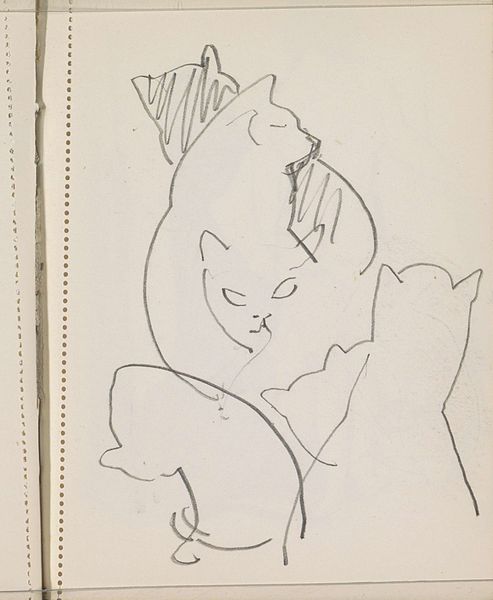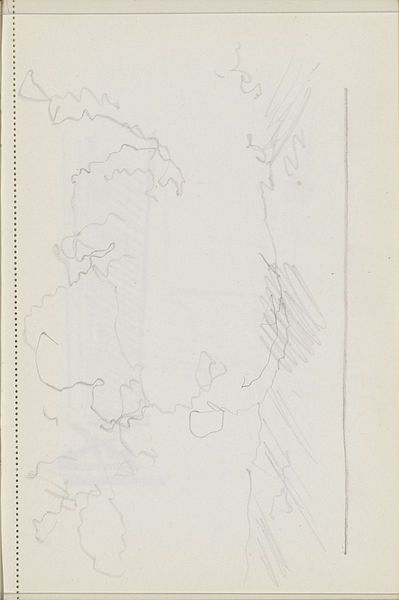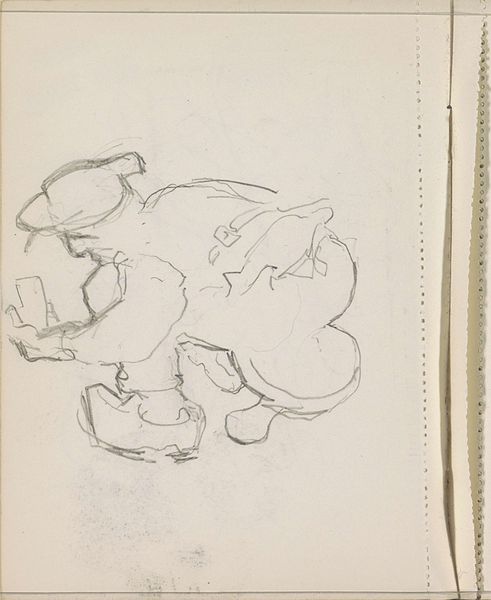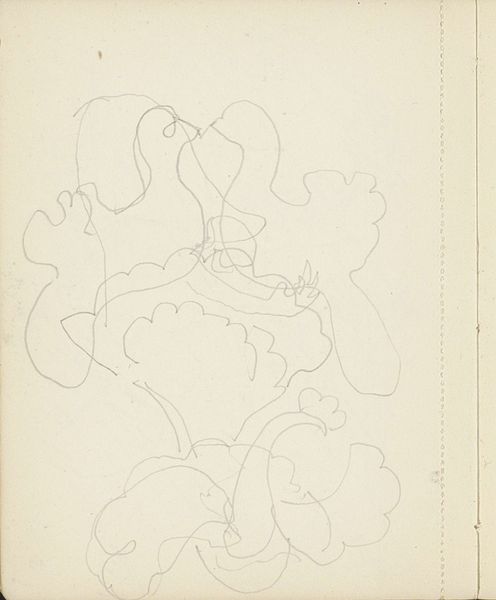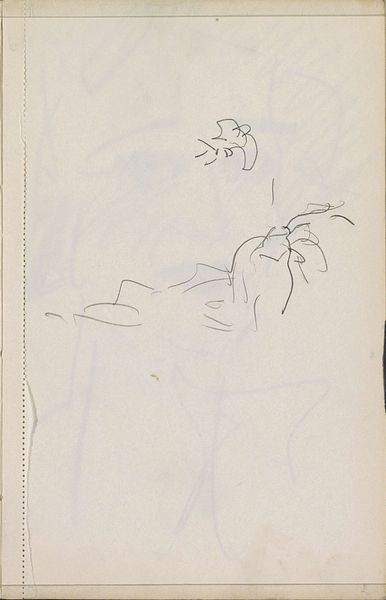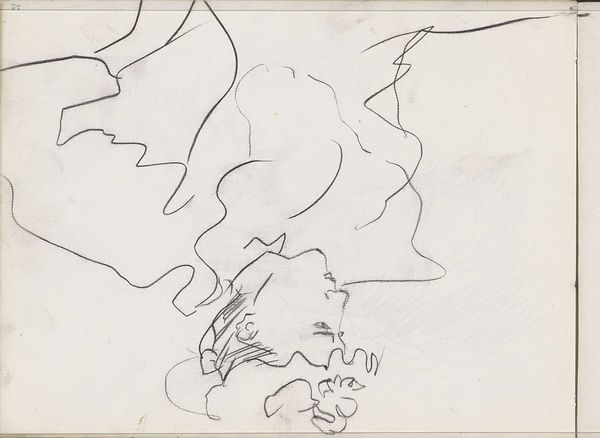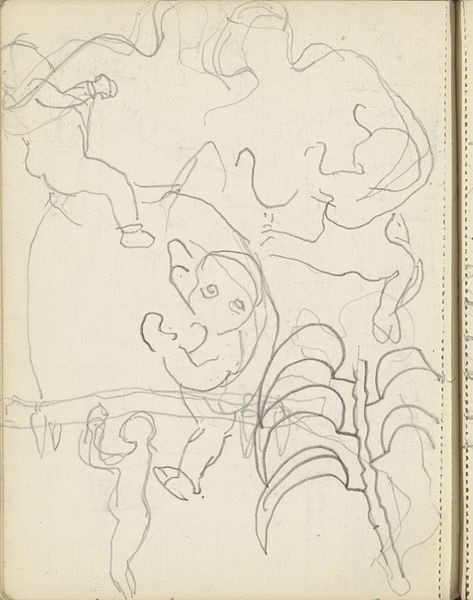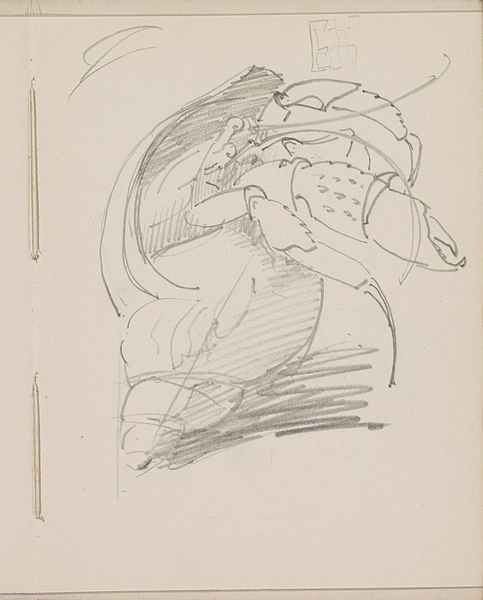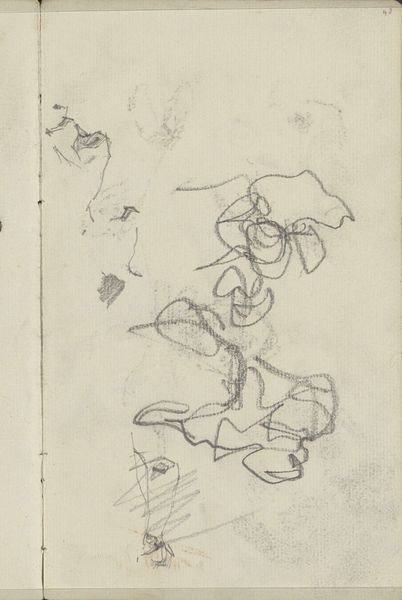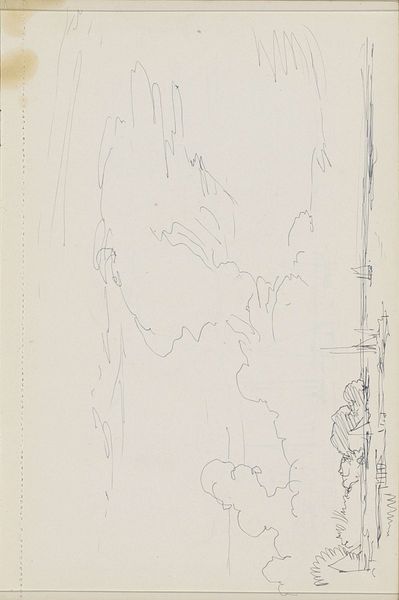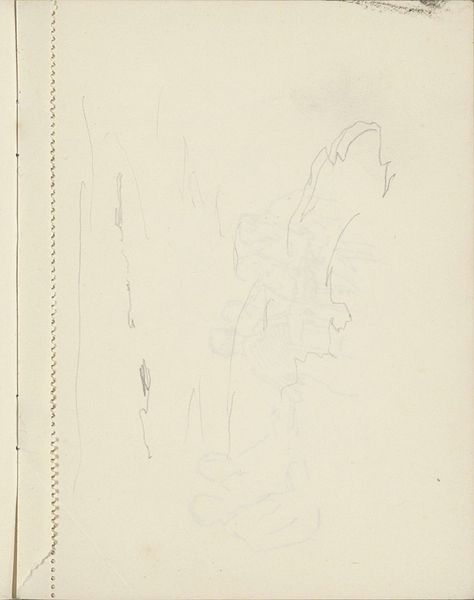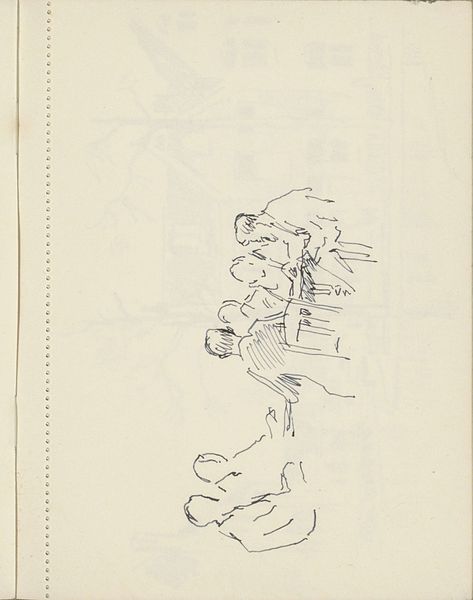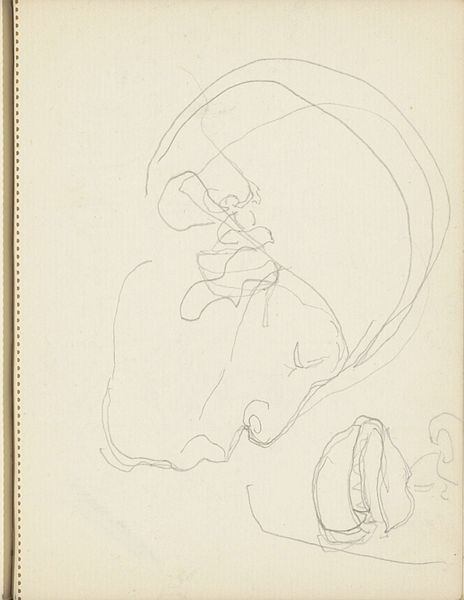
drawing, paper, pencil
#
drawing
#
paper
#
form
#
pencil
#
abstraction
#
line
Copyright: Rijks Museum: Open Domain
Curator: This is Reijer Stolk’s “Knielende man,” dating sometime between 1906 and 1945. It’s a pencil drawing on paper, currently held here at the Rijksmuseum. Editor: My immediate reaction is one of ambiguity. The forms are very simplified, almost to the point of abstraction. It evokes a sense of incompleteness. Curator: Stolk’s focus here seems to be on pure form, distilled down to the most essential lines. I see an interest in capturing movement and weight using a minimum of marks, aligning with a broader modernist interest in simplifying representation and reducing labor. The material itself—pencil and paper—further speaks to accessibility and ease of production. Editor: Absolutely, and what I find interesting is how those minimal lines create such tension. The figure is discernible, kneeling, yet the lack of detail almost abstracts the emotion itself. This removal lets us focus purely on the pose, on the way the body occupies the space within the picture plane. The choice of such humble material invites close inspection. Curator: The very act of kneeling historically is charged – it often indicates supplication or submission, of course. But here, stripped of identifying markers, the figure transcends a specific context. One could almost read into that a critique of power structures, or conversely, the burdens imposed upon the working classes, considering this work emerged during times of great social upheaval. Editor: An insightful point. While the cultural implications resonate, visually I remain struck by the deliberate sparseness, a quality inherent to its very construction. It creates a sort of void, pushing us to actively construct our own narrative. It almost denies fixed meaning, becoming something incredibly potent. Curator: I see what you mean. Focusing on the interaction between viewer and artwork makes you see how Stolk compels you to engage with a piece with such distilled visual language, and that choice reflects, I think, his own artistic and political positions within society. Editor: Indeed, in the end, this artwork’s strength resides in its form – not necessarily the recognizable pose, but also the open narrative.
Comments
No comments
Be the first to comment and join the conversation on the ultimate creative platform.
